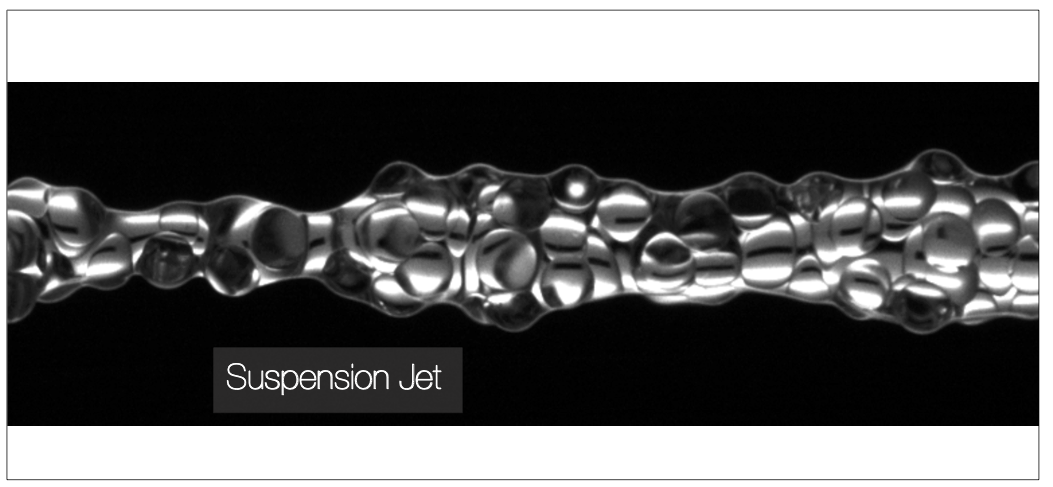SOFT-NEWS
SOFT – Complex Fluids & Solids
We are a collaborative research team working on the physics of complex media, from granular flows to bio-inspired systems. Welcome !
The SOFT team
“Softness disgusts, frightens and annoys. Indecisive and inconstant, it reminds us of our own degeneracy. From octopus to snot to the apathy of the lazy man, it’s indisposing. But this much-criticized softness is also a matter of transition, evoking fluidity, buoyancy and tenderness, the comfort of a soft doughnut. And isn’t the time for relaxation and contemplation the time for creativity? Softness is flexible, ungraspable… dissident!”
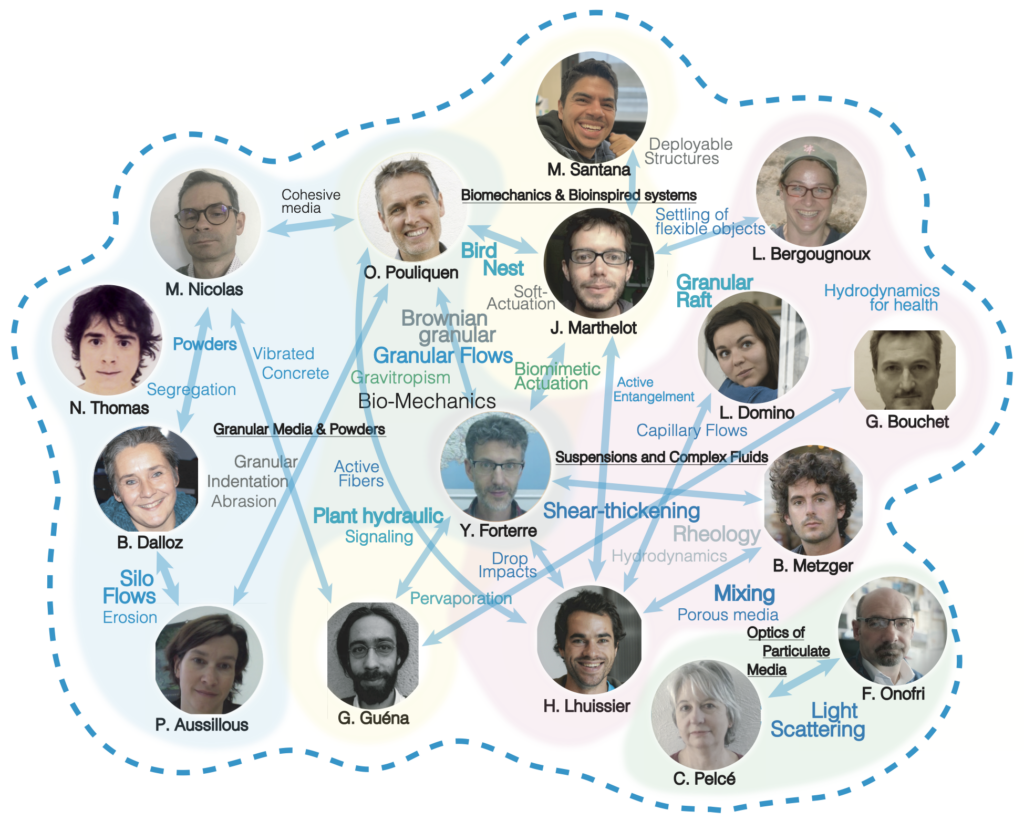
NEWS:
July 2024 ***SUMMER TIME***
- Welcome to Vincent Bertin, Soft-Matter physicist, starting a Post-Doc on ERC CohPa with Oliver.
- Olivier and Denis, at IFPRI conference in Toronto: wish they could bring this 4 ball rheometer back home!
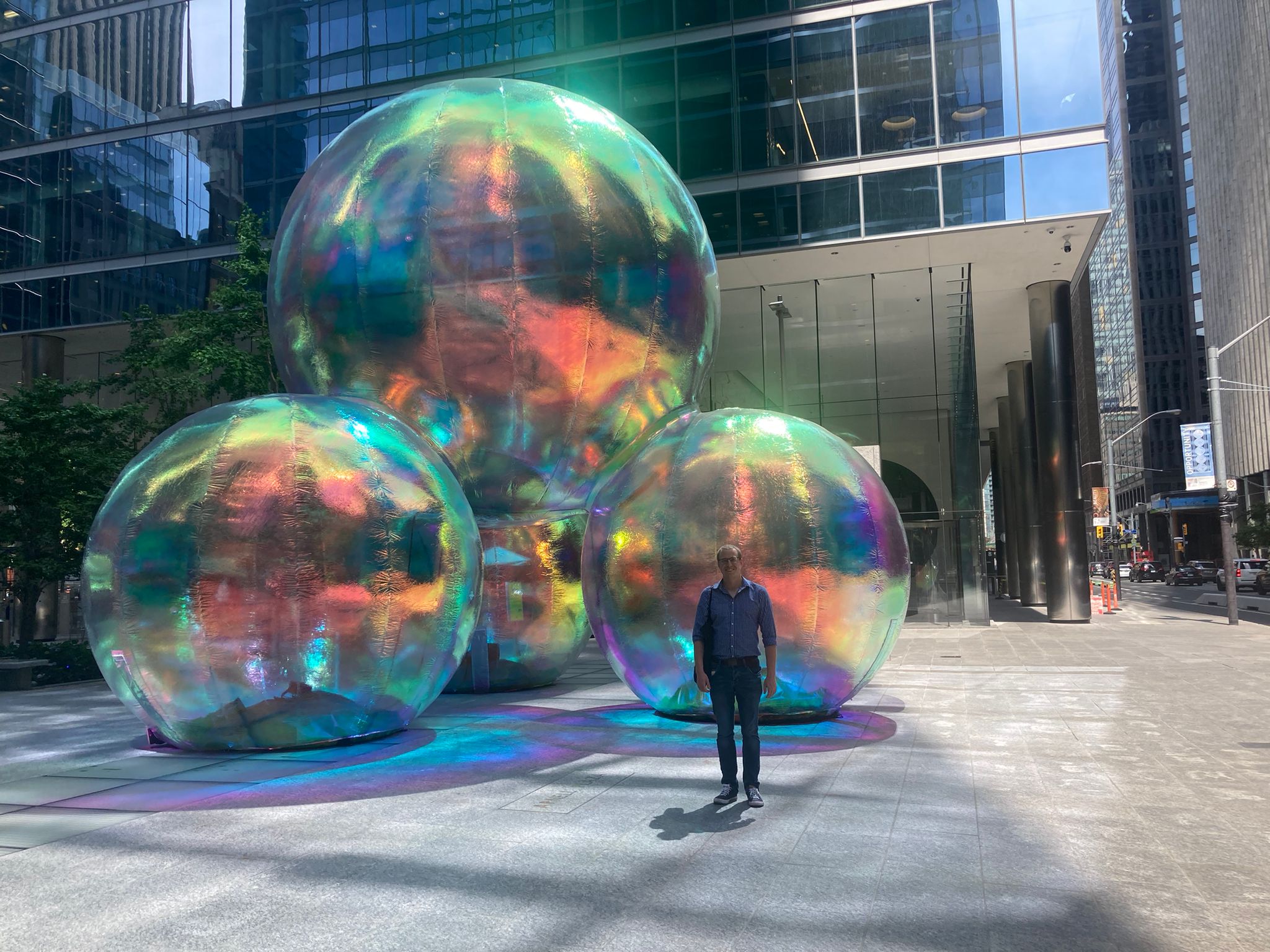
- Delicious Lab Days in Porquerolles organized by Lucie and Murillo, many thanks!

- Really cool an studious Origami workshop given by David Melancon (Polytechnique Montreal), visiting the SOFT Team for 3 weeks:

- New funding from the CNRS Innovation on Joël’s project Heartics (Holistic Endocardial Adaptation and Reconstruction Technology for Interventional Cardiac Solutions) , which aims to adapt the shape of stents to the anatomy.

- ‘Cause I’m lonesome soliton, Yeah, I’m lonesome frictional soliton…’ Well done Alexis for your PNAS, also featured by CNRS Ing.!

-
New Lab Space!
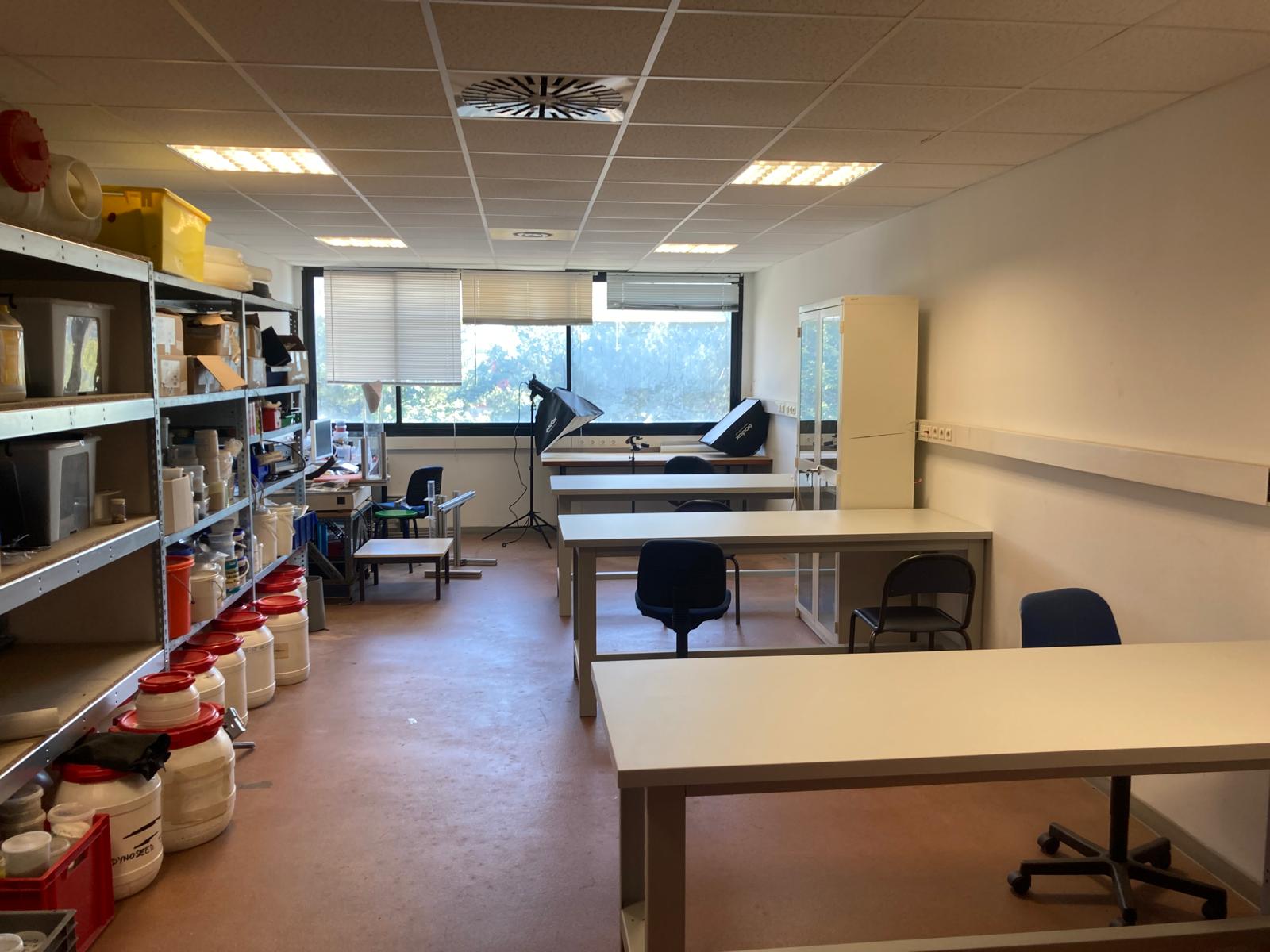
- New 3D printer!
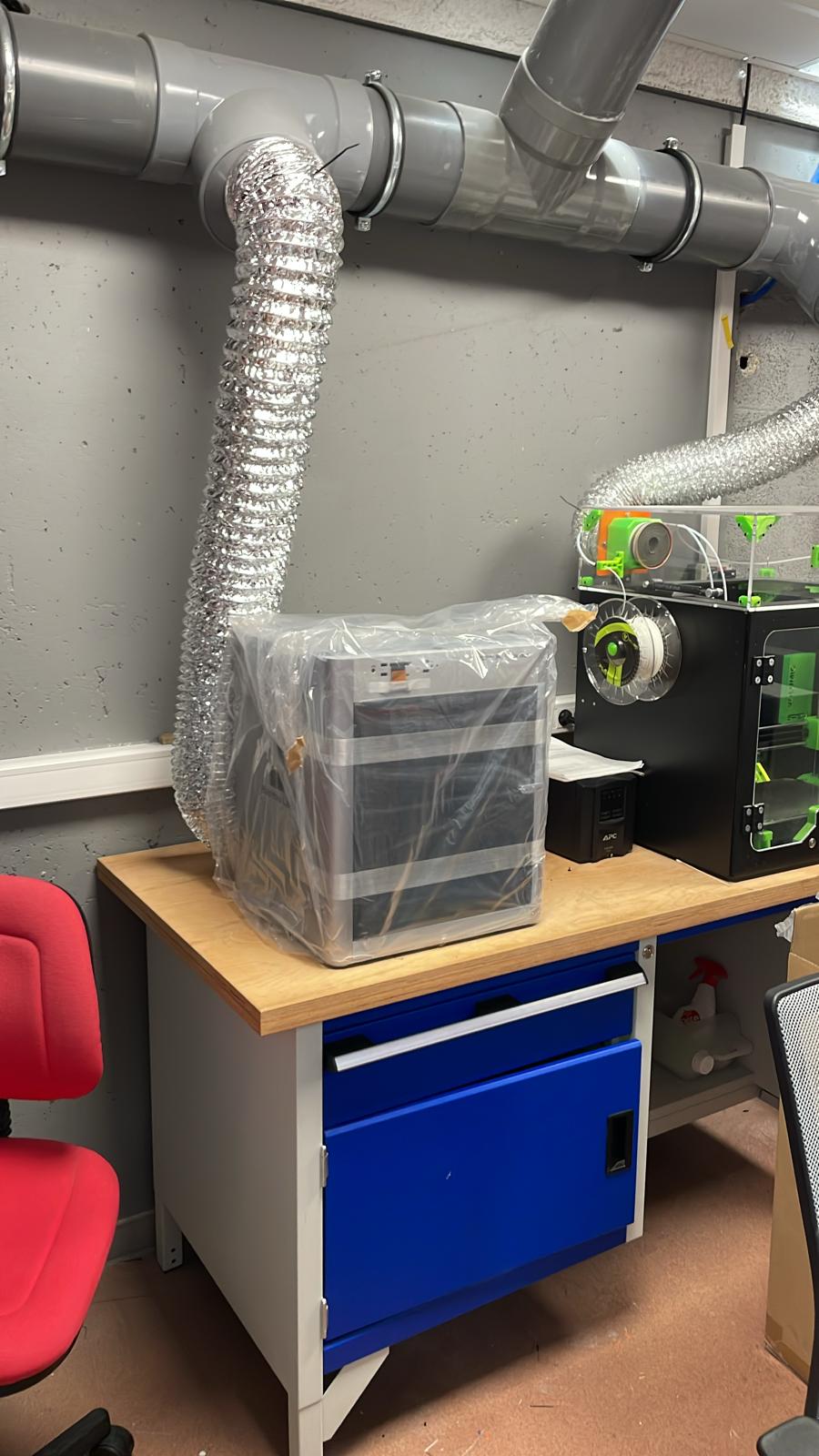
-
Jasna Brujnic from NYU et Matthieu Wyart from EPFL are visiting SOFT in July, sounds like there will be a little Méjean, very soon.
Mars 2024 Many thrilling news since…
-
The SOFT Team proudly welcomes: Lucie Domino, just hired as a CNRS researcher, specialist of hydroelastic surface waves and shape morphing meta-materials.
-
Olivier Pouliquen is the 2024 Weissenberg Awardee, double thumbs up!
« The work of Olivier Pouliquen in rheology is at the very foundation of our understanding of the flows of granular materials »
-
New fundings from A*midex PLANTSPIN to study how plants grow upside down with Yoël Forterre and in collaboration with Futura Gaya.

- Welcome to Aubain, from ENS de Lyon, starting a post-doc on Active Fibers with Joël, Henri and Olivier.
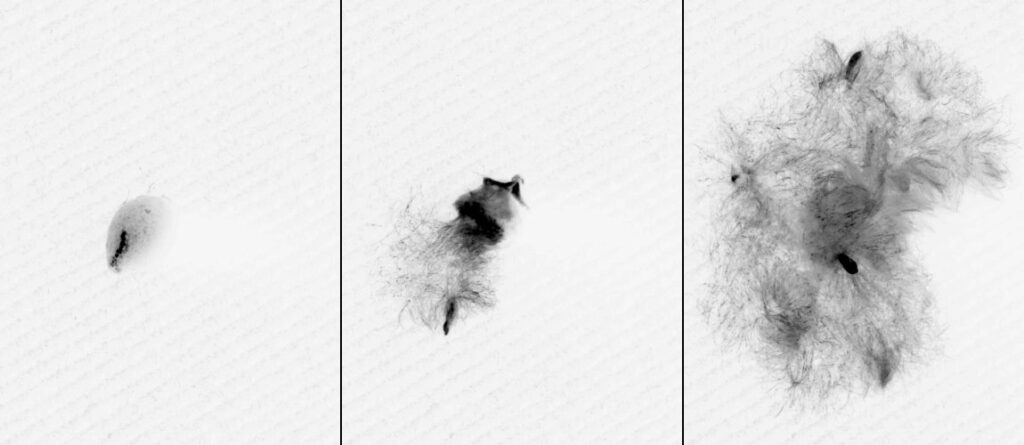
- Everything you need to know about inertial effects on PINK Ellipsoïds by Davide and Lolo! (The paper is here).

- The GFR 2024 is organized by us, Sham Tlili from IBDM and Simon Gsell from IRPHE. It will be held in Marseille in October! (Website here).
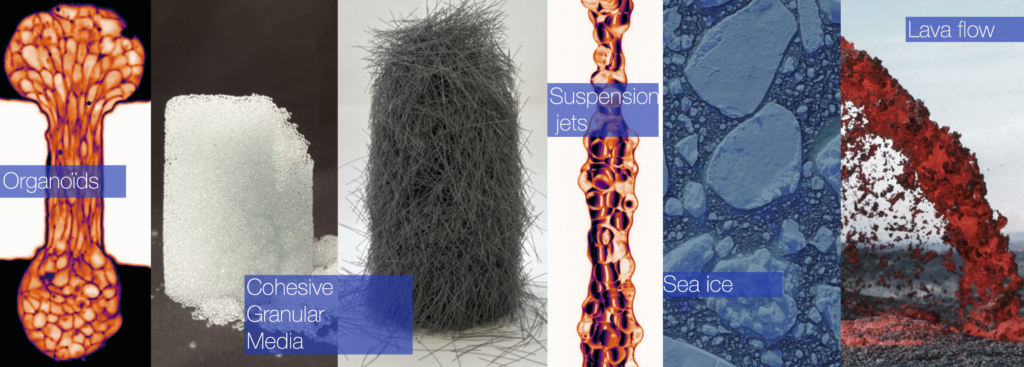
- MARSTERDAM: Marseille world capital of soft matter in April. We are very happy to welcome the Soft Matter group from Amsterdam. This event is organized by Joël and Martin from IRPHE.
Job OFFERS:
Willing to join the SOFT Team? Below are our current offers. Any questions about the lifestyle in Marseille? Check this out: Time Magazine 2022, Marseille Secrète, Lonely Planet.
- PhD on “Hydraulic Actuation in Insects” with Joël Marthelot, CENTURI call, deadline: 02/16/2024.
- PhD on “Wear when moving in sand” with Olivier Pouliquen & Pascale Aussillous funded by CIFRE (Feurst).
- PhD on “Physics of Fast Actuation in Plants” with Yoël Forterre & Joël Marthelot, Call French National Ministry of Research, deadline: june 2024.
THERE ARE ALWAYS MANY OPPORTUNITIES FOR INTERSHIPS. Do not hesitate to contact us!
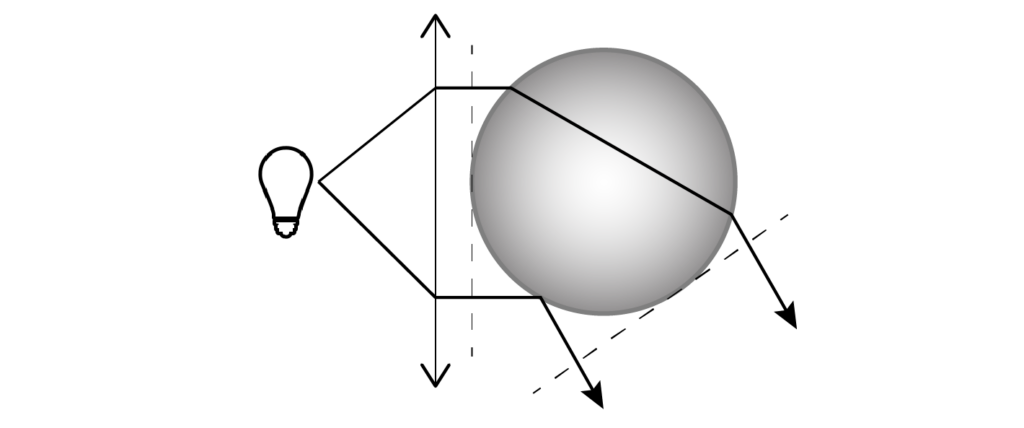
This theme studies light scattering properties in relation with the characterization of nano- and micro-particle systems (…)

This theme deals with the static and flow behaviors of dense granular media and cohesive powders (…)
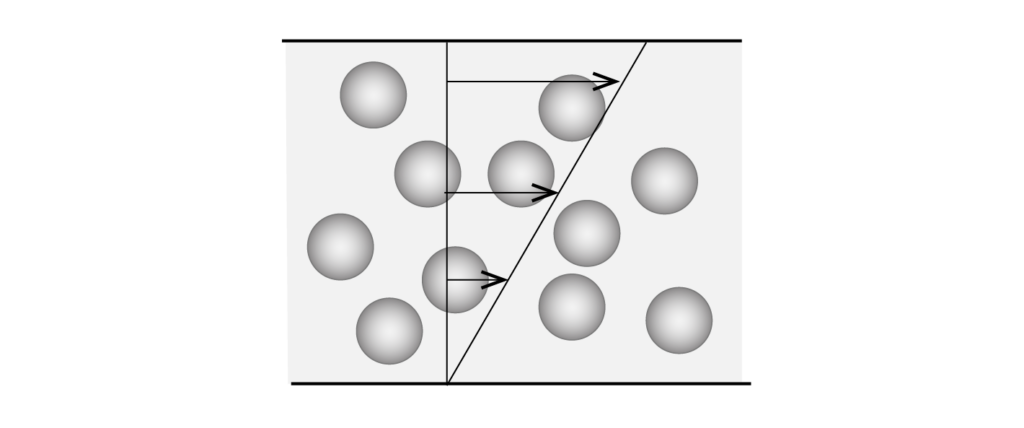
This theme deals with the flow of fluid/particles mixtures, such as dense suspensions, immersed granular flows (…)

This research topic at the cross-road of physics, engineering and biology addresses the biomechanics of plants (…)
People
Group manager: Bloen METZGER
Permanents:
Special Guest: Elisabeth GUAZZELLI
PhD Students & Post-Docs:
Simon Hadjade (PhD)

-working on “Drosophila wing expansion for soft robotic application” with Joël Marthelot, Raphaël Clément (IBDM) & Yoël Forterre.
-Coming from ENS Paris Saclay, France
Ilaria Castaldi (PhD)

-working on “Mixing fluids of different viscosities” with Henri Lhuissier & Bloen Metzger and funded by ITN Copermix.
-Coming from Roma, Italy.
Francisco Melo da Rocha (Post-Doc)

-Worked on ‘the hydrodynamics of shear thickening suspensions’ with B. Metzger, H. Lhuissier & Y. Forterre, but he likes Marseille so much that he is now working on ‘Cohesive Powders’ with M. Nicolas & O. Pouliquen.
-Coming from Recife, Brazil.
Victor Charpentier (Post-Doc)

-Working on ‘Mechanics of large deformations. Bio-inspiration. Renewable energies’ with J. Marthelot.
-coming from Princeton and previously from Ecole des Ponts ParisTech.
Karim Ayoubi (PhD)

-Working on ‘the Settling of flexible Objects’ with L. Bergougnoux & J. Marthelot.
-Coming from Master `Fluid & Solids’, and previously from Beirut Arab Univ., Liban.
Anjishnu Choudhury (Post_doc)

-Working on ERC CohPa doing numerical modeling of granular media with O. Pouliquen, P.-Y. Lagrée and S. Popinet (IJRDA, Sorbonne Université)
-Coming from India.
Valentin Paume (PhD)

-Working on `Indentation forces in Granular media‘ with O. Pouliquen, P. Aussillous & the company Feurst.
-Coming from Polytech Marseille.
Priya Vishnumurthy (PhD)

-Working on the deposition of a medicinal substance on the olfactory slits by a nasal spray, PhD Cifre with Gilles BOUCHET and NEMERA
-Coming from India.
Alexis Bougouin (Post-Doc)

-Working on ‘the flow of shear thickening suspension in pipes’ with B. Metzger, H Lhuissier & Y. Forterre.
-Coming from Toulouse too.
Mathieu Rivière (Post-Doc)

-Working on ‘Physics of Fast Actuation in Plants in Mimosa Pudica’ with Y. Forterre and J. Marthelot.
-Coming from Tel Aviv, Israel, and previously MSC, Paris.
Chong Wei Hong (PhD)
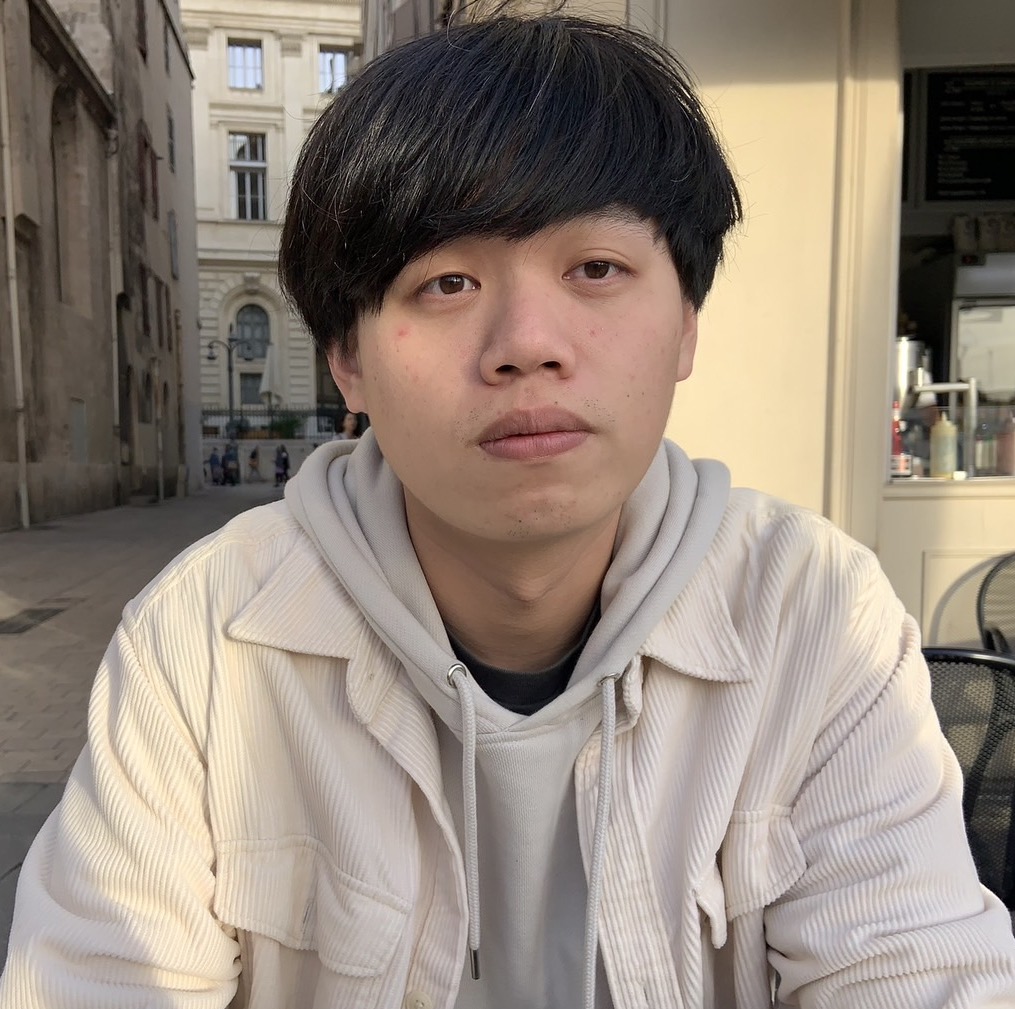
-Working on ‘Sediment transport by a laminar flow’ with P. Aussillous in collaboration with E. Guazzelli.
-Coming from Taiwan.
Terence Desclaux (Post-Doc)

-Working on `Root penetration in soils’ with Y. Forterre and J. Marthelot.
-Coming from Toulouse, IMFT.
Denis Dumond (Post-Doc)

-Working on ‘numerical simulations of cohesive grains’ with Olivier.
-Coming from Mons Belgium.
Aubain Archambault (PhD)

-Working on ‘Active Fibers’ with O. Pouliquen, J. Marthelot and H. Lhuissier
-Coming from ENS de Lyon.
Hector Ura (Post-Doc)

-Working on ‘Suspension jets” with H. Lhuissier
-Coming from Chili.
Faisal Ahmad (Post-Doc)

-Working on ‘Self-contracting vascular solids with M. Brandenbourger (IRPHE) and J. Marthelot.
-Coming from India and did his PhD on fluid dynamics models of gastrointestinal tract with Clément de Loubens in Grenoble
Antoine WEBER (Post-Doc)

-Working on ‘Blood rheology and Microstructure’ with L. Bergougnoux and E. Franceschini.
-Coming from d’Alembert, Paris.
Latest Publications
Influence of small inertia on Jeffery orbits
We experimentally investigate the rotational dynamics of neutrally buoyant axisymmetric particles in a simple shear flow. A custom-built shearing cell and a multi-view shape-reconstruction method are used to obtain direct measurements of the orientation and period of rotation of particles having oblate and prolate shapes (such as spheroids and cylinders) of varying aspect ratios. By systematically changing the viscosity of the fluid, we examine the effect of inertia (which may be originated from either phase) on the dynamical behaviour of these suspended particles up to a particle Reynolds number of approximately one. While no significant effect on the period of rotation is found in this small-inertia regime, a systematic drift among several rotations toward limiting stable orbits is observed. Prolate particles are seen to drift towards the tumbling orbit in the plane of shear, whereas oblate particles are driven either to the tumbling or to the vorticity-aligned spinning orbits, depending on their initial orientation. These results are compared with recent small-inertia asymptotic theories, assessing their range of validity, as well as to numerical simulations in the small-inertia regime for both prolate and oblate particles.
Di Giusto, D., Bergougnoux, L., Marchioli, C., & Guazzelli, É. (2024). Influence of small inertia on Jeffery orbits. Journal of Fluid Mechanics, 979, A42. [pdf]

Collapse of a cohesive granular column
The collapse of a quasi-two-dimensional column of cohesive granular media is investigated experimentally and numerically in the framework of a continuum model. The configuration is an initial parallelepiped-shaped granular pile, which is suddenly released by opening a retaining door. The experiments rely on a model material developed by Gans et al. (Phys. Rev. E, vol. 101, 2020, 032904) made of silica particles coated with polyborosiloxane, for which the adhesive interparticle force can be tuned by controlling the thickness of the coating. Numerically, the collapse is simulated using a simple cohesive rheological model implemented in a two-dimensional Navier–Stokes solver. We investigate the role of cohesion on the stability of the column, the mode of failure, the flow dynamics and the geometry of the final deposit. Our results show that the continuum model captures the main features observed experimentally.
Gans, A., Abramian, A., Lagrée, P. Y., Gong, M., Sauret, A., Pouliquen, O., & Nicolas, M. (2023). Collapse of a cohesive granular column. Journal of Fluid Mechanics, 959, A41. [pdf]

Fabric-Based Star Soft Robotic Gripper
Soft pneumatic gripping strategies are often based on pressurized actuation ofstructures made of soft elastomeric materials, which limits designs in terms of size,weight, achievable forces, and ease of fabrication. In contrast, fabric-based inflatablestructures offer high stiffness-to-weight ratio solutions for soft robotics, but theiractuation has been little explored. Herein, a new class of pneumatic soft grippers ispresented that exploits the in-plane overcurvature effect of inextensible fabricflatballoons upon inflation. A star-shaped gripper contracts radially under pressureproducing a gripping force on the object whose intensity can be modulated by thepressure input. First, the kinematics and mechanics of a single V-shaped actuatorare studied through experiments,finite element simulations, and analytical models.Then, these results are leveraged to predict the mechanical response of the entirestar, optimize its geometry, and maximize contraction and stiffness. It is shown thatthe gripping performance can be improved by stacking several stars with silicon-coated corners. It is expected that theflexibility, robustness, scalability, and ease offabrication of this methodology will lead to a new generation of lighter and largeractuators capable of developing higher forces and moving delicate and irregularlyshaped objects while maintaining reasonable complexity.
Andrade-Silva, I., & Marthelot, J. (2023). Fabric‐Based Star Soft Robotic Gripper. Advanced Intelligent Systems, 5(8), 2200435. [pdf]
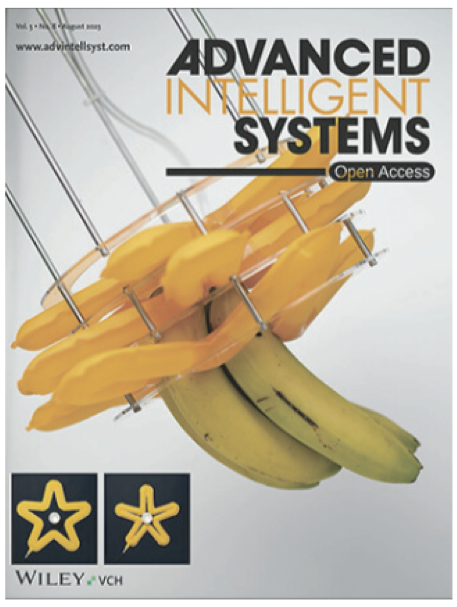
The rheology of dense colloidal suspensions, which may undergo discontinuous shear thickening or shear jamming, is particularly difficult to analyze with conventional rheometers. Here, we develop a new rheometer adapted to colloidal suspensions: the “capillarytron,” which uses the air-suspension capillary interface to impose particle (or osmotic) pressure during shear. More from our article recently published in Physical Review X and featured in Physics.
Etcheverry, B., Forterre, Y., & Metzger, B. (2023). Capillary-stress controlled rheometer reveals the dual rheology of shear-thickening suspensions. Physical Review X, 13(1), 011024. [pdf]
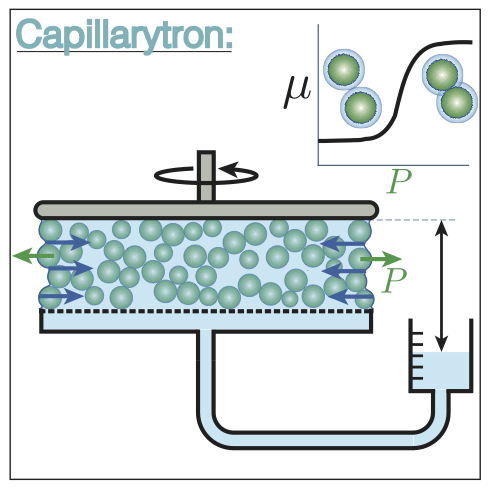
Book “Soft Matter in Plants: from Biophysics to Biomimetics”
Plants offer some of the most elegant applications of soft matter principles in Nature. Starting with fundamental concepts around plant biology, physics of soft matter and viscous fluids, readers of this book will be given a cross-disciplinary and expert grounding to the field, from local scale aspects (fluid-solid coupling, cell and tissue growth, water stress and cavitation) to physical interaction with the environment (root/soil, pathogens invasion) to engineering applications (actuators inspired by plant motion).
K.H. Jensen, Y. Forterre (Eds) (2022) “Soft Matter in Plants: from Biophysics to Biomimetics”. Royal Society of Chemistry Book, 244 pages
Chapter 1. Y. Forterre “Basic soft matter for plants” pdf
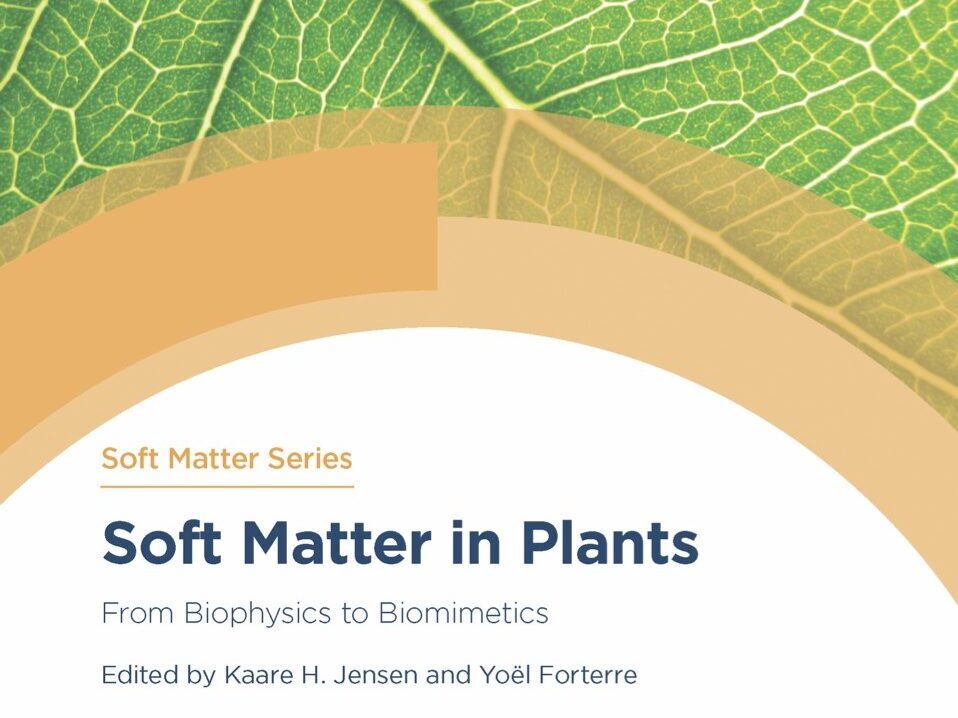
What is the flow resistance of a suspension subjected to a transient change in boundary conditions – such as during an impact? This work shows that the early stress response of the suspension may differ strongly from the prediction of the suspension balance model based on the steady-state rheology. A two-phase model incorporating a Reynolds-like dilatancy law can quantitatively capture the dilation/compaction dynamics of the suspension.
Athani et al J. Fluid Mech. 949 A9 (2022)
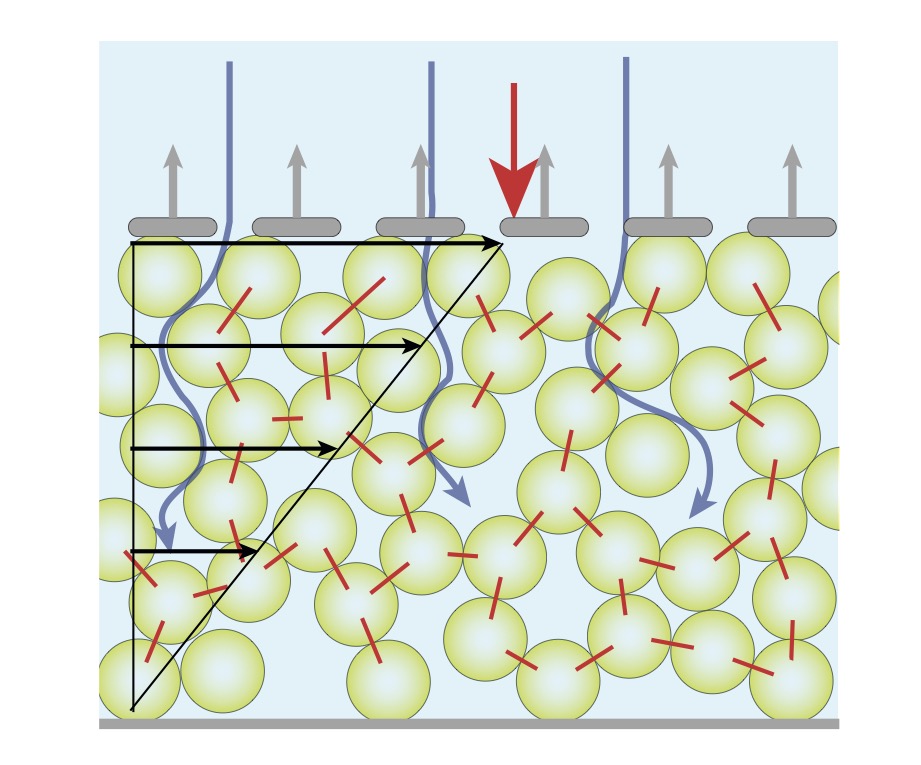
Viscous to Inertial Transition in Dense Granular Suspensions [paper in Phys. Rev. Lett.]
Granular suspensions present a transition from a Newtonian rheology in the Stokes limit to a Bagnoldian rheology when inertia is increased. A custom rheometer that can be run in a pressure- or a volume-imposed mode is used to examine this transition in the dense regime close to jamming. By varying systematically the interstitial fluid, shear rate, and packing fraction in volume-imposed measurements, we show that the transition takes place at a Stokes number of 10 independent of the packing fraction. Using pressure-imposed rheometry, we investigate whether the inertial and viscous regimes can be unified as a function of a single dimensionless number based on stress additivity.
Tapia et al Phys. Rev. Lett. 129, 078001 (2022)
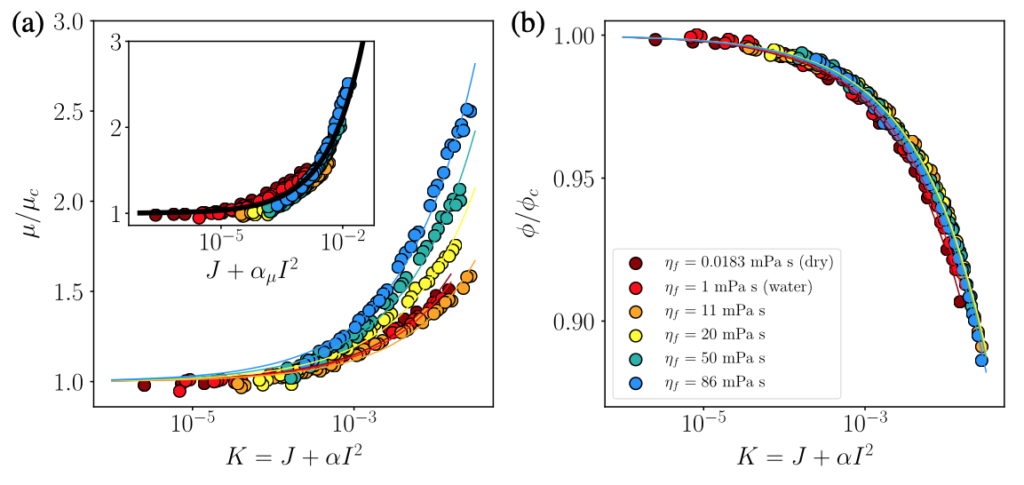
First “European ITN project Copermix” Workshop at IUSTI !
This workshop aims at providing common high-level phenomenological and theoretical background about the new lamellar description of mixing, and first contacts with state of the art experimental and computational techniques. It will be held at the IUSTI institution in Marseille, with dedicated lab training session on experimental techniques in our team.
You can download the program here:

Bubble casting soft robotics [paper in Nature]
Inspired by living organisms, soft robots are developed from intrinsically compliant materials, enabling continuous motions that mimic animal and vegetal movement. Here we demonstrate a new all-in-one methodology for the fabrication and the programming of soft machines. Instead of relying on the assembly of individual parts, our approach harnesses interfacial flows in elastomers that progressively cure to robustly produce monolithic pneumatic actuators whose shape can easily be tailored to suit applications ranging from artificial muscles to grippers.
Jones et al Nature 599, 229-233 (2021)
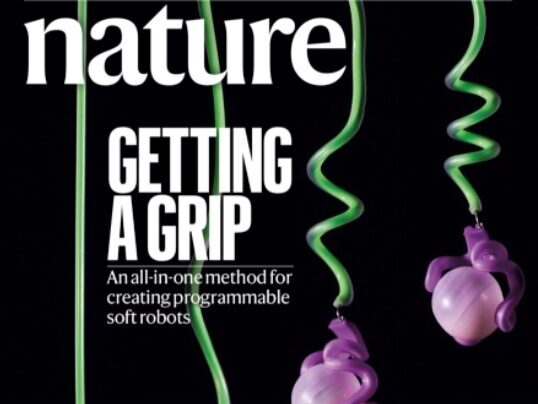
The Infectious agents, such as SARS-CoV-2, can be carried by droplets expelled during breathing. The spatial dissemination of droplets varies according to their initial velocity. Combining experimental visualization of droplet exhalation and computation fluid dynamic, we determine the velocity of the exhaled air during vocal exercises. Our study revealed that vocal exercises produce a slower airflow than long exhalation. Speech therapy should, therefore, not be associated with an increased risk of contamination when implementing standard recommendations..
Giovanni et al European Archives of Oto-Rhino-Laryngology. 278 1687-1692 (2021) 10.1007/s00405-020-06200-7

Rheology of Cohesive Granular Media: Shear Banding, Hysteresis, and Nonlocal Effects [paper in PRX]
We provide a comprehensive analysis of the rheology of a cohesive granular medium, sheared in a normal-stress-imposed plane shear cell over a wide range of shear rate, employing numerical simulations. At high imposed shear rates, the flow is homogeneous, and the rheology is well described by the existing scaling laws. However, at low imposed shear rates, the flow is inhomogeneous, exhibiting shear banding. We reveal that the occurrence of shear banding is related to the existence of a nonmonotonic intrinsic rheological curve. A simple theoretical model based on a nonlocal rheological model coupled with a nonmonotonic flow curve successfully reproduce all the key features of the shear banding observed in the numerical simulations.
Mandal et al Phys. Rev. X 11 21017 (2021) 10.1103/PhysRevX.11.021017
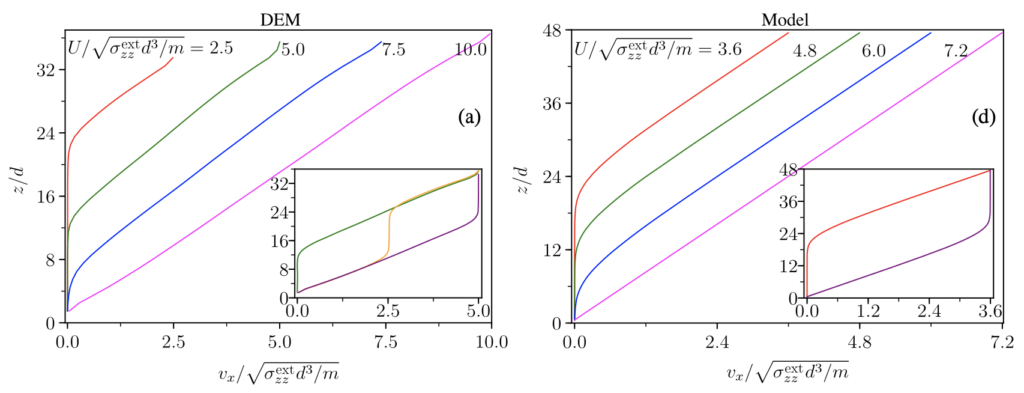
The response of plants to gravity implies starch-filled plastids, the statoliths, which sediments at the bottom of the gravisensing cells. We build on recent experimental results showing that statoliths do not act as gravitational force sensor, but as position sensor, to develop a bottom-up theory of plant gravitropism. The main hypothesis of the model is that the presence of statoliths modifies PIN trafficking close to the cell membrane. This basic assumption, coupled with auxin transport and growth in an idealized tissue made of a one-dimensional array of cells, recovers several major features of the gravitropic response of plants..
Levernier et al, Front. Plant Sci. 12 651928 (2021) https://www.frontiersin.org/articles/10.3389/fpls.2021.651928/full
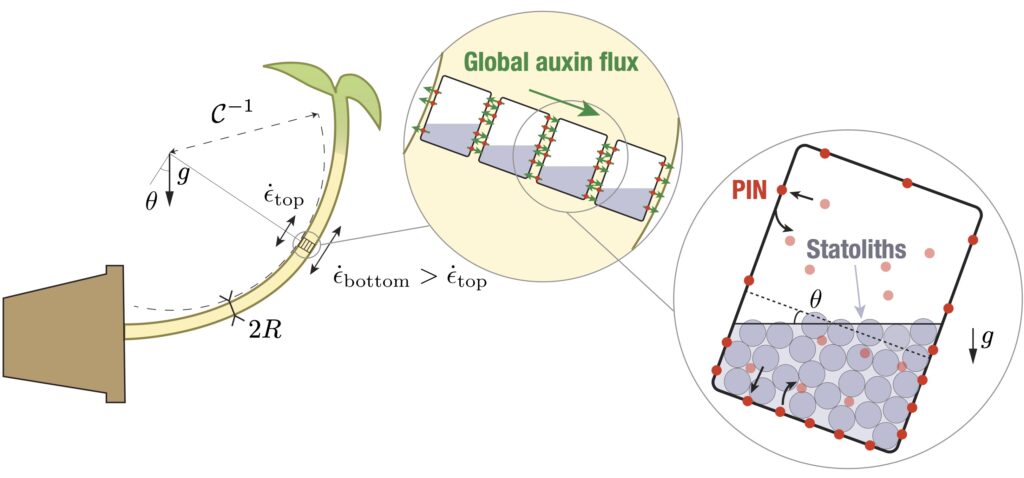
Extensional viscosity and thinning of a fiber suspension thread [paper in Phys Rev Fluids]
Two flow situations involving the extensional dynamics of a rigid fibre suspension are investigated: the gravitational stretching of a quasi-steady jet and the breakup of an unstable capillary bridge. At high concentration, the extensional viscosity increases much more strongly with increasing φ than predicted by available models assuming purely hydrodynamics interactions between the fibers.
Chateau et al Phys. Rev. Fluids 6, 44307 (2021) https://doi.org/10.1103/PhysRevFluids.6.044307
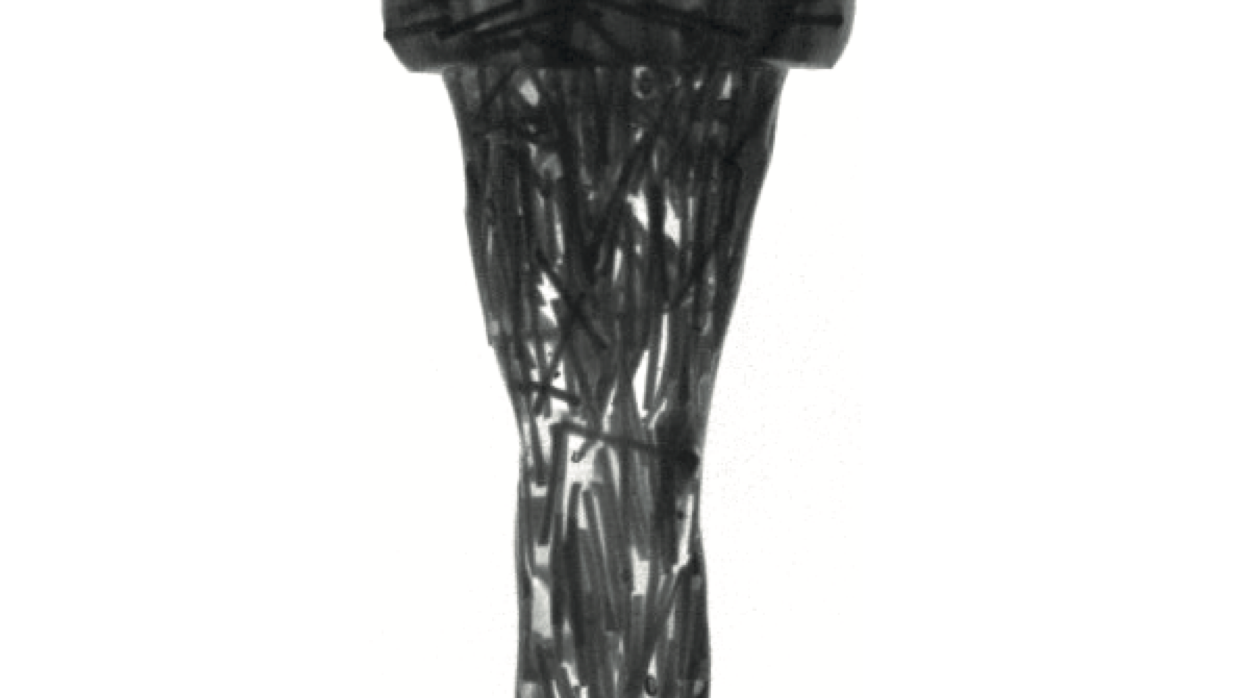
Falling clouds of particles in vortical flows [paper in JFM]
The coupling between particle-particle and particle-fluid interactions is examined by studying the sedimentation of clouds of spheres in a model cellular flow at a small but finite Reynolds number. The model flow consists of counter-rotating vortices and is aimed at capturing key features of the vortical effects on particles. The dynamics of clouds settling in this vortical flow is investigated through a comparison between experiments and point-particle simulations.
Marchetti et al J. Fluid Mech. 908 A30 (2021) 10.1017/jfm.2020.883
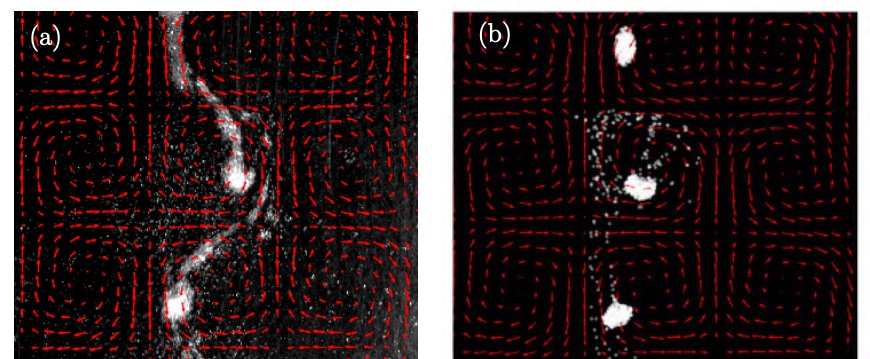
We investigate the flow of a shear-thickening suspension down an inclined plane and show that, at large volume fractions, surface kinematic waves can spontaneously emerge. Curiously, the instability develops at low Reynolds numbers, and therefore does not fit into the classical framework of Kapitza or ‘roll-waves’ instabilities based on inertia. We show that this instability, that we call ‘Oobleck waves’, arises from the sole coupling between the non-monotonic (S-shape) rheological laws of shear-thickening suspensions and the flow free surface.
Darbois Texier et al Communication Physics 3, 232 (2020)

Insight into the Rheology of Cohesive Granular Media [paper in PNAS]
In this paper, we show using discrete numerical simulations that the cohesiveness during flow is not only controlled by the interparticle adhesion, but also by the stiffness and inelasticity of the grains. For the same adhesion, stiffer and less dissipative grains yield a less cohesive flow, i.e., higher “flowability.” This combined effect can be embedded in a single dimensionless number—a result that enriches our understanding of powder rheology.
Mandal et al PNAS – Published 2 April 2020
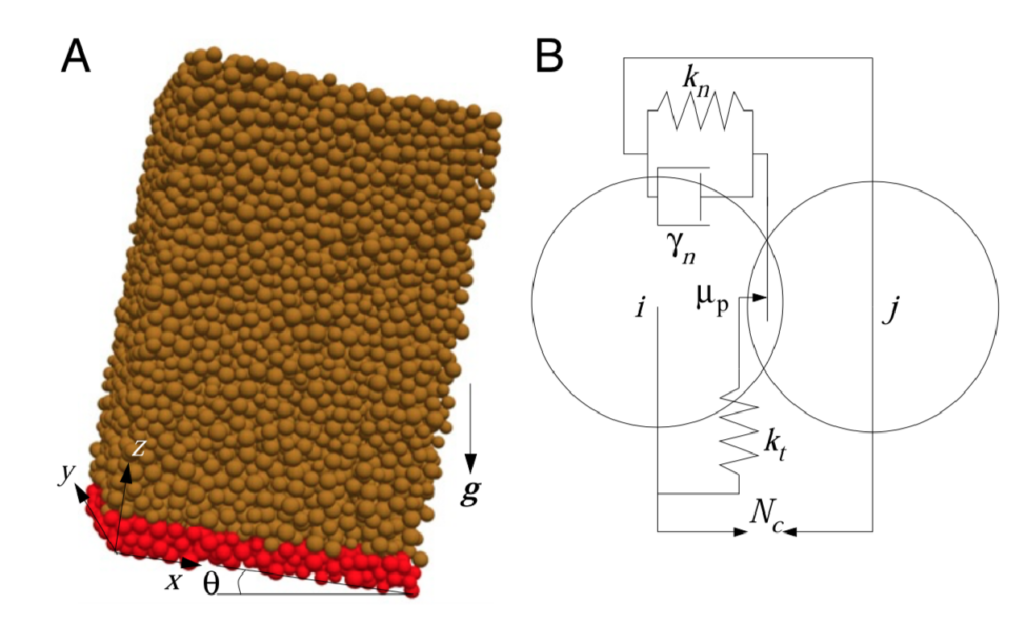
Velocity distributions, dispersion and stretching in three-dimensional porous media [paper in JFM]
Using index matching and particle tracking, we measure the three-dimensional velocity field in an isotropic porous medium composed of randomly packed solid spheres. Our results confirm the chaotic nature of advection within three-dimensional porous media and, by providing the laws of dispersion and stretching, opens the way to a complete description of mixing in porous media.
Souzy et al J. Fluid Mech. – Published 23 March 2020
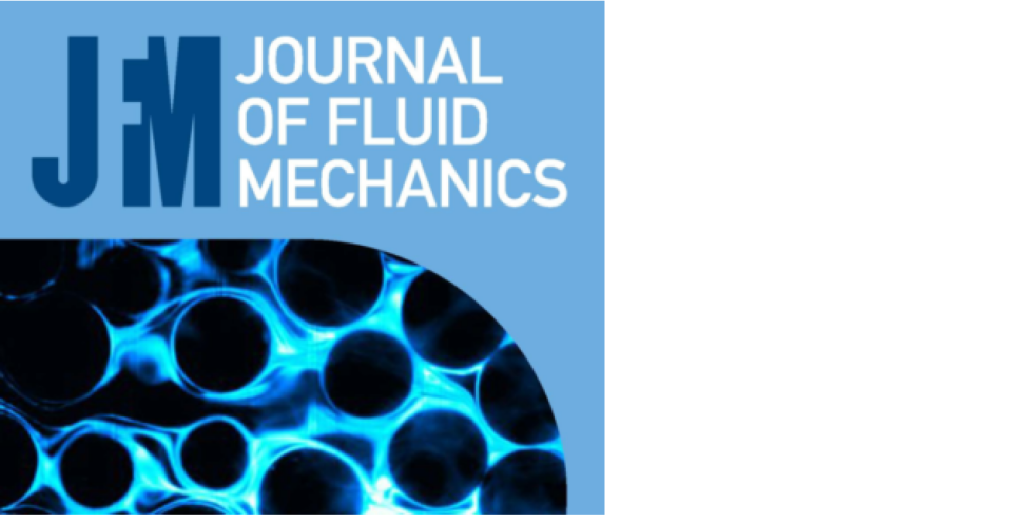
In this paper, we present a new device called the Darcytron, allowing pressure-imposed rheological measurements on dense suspensions made of very small particles, like shear-thickening suspensions. Our results on a model shear-thickening suspensions of micrometric silica beads provide direct evidence of a transition between a frictionless and a frictional state as the particle pressure is increased, providing support to the recent frictional transition scenario for shear thickening.
Clavaud et al J. Rheology – Published 5 March 2020
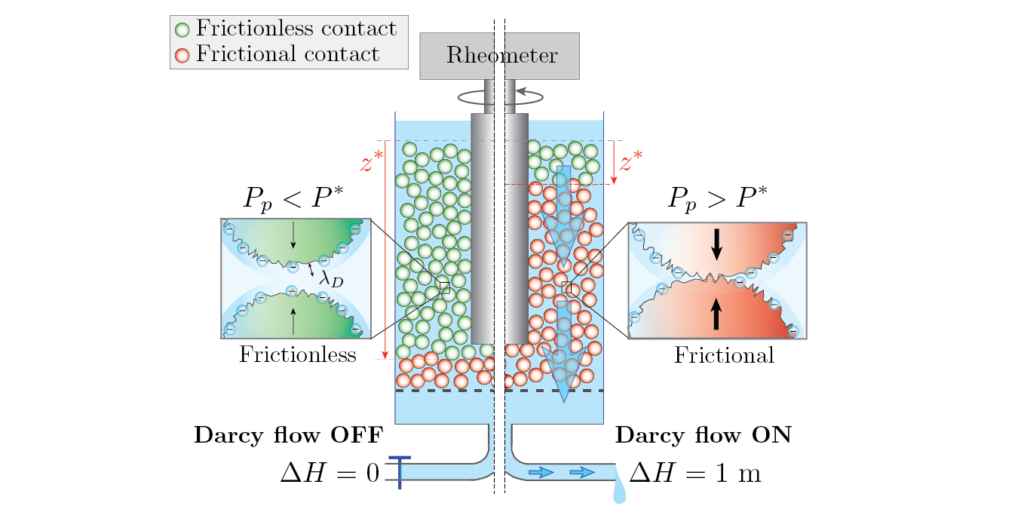
Laser-light and Interactions with particles [conference LIP2020]
The next LIP conference will be held on August 22-28th, 2020 in the Institute of Physics, Warsaw, Poland. Main topics: interactions between laser beams and particles, encompassing the following fundamental topics : particle characterization methods, near-field, far-field and time-resolved scattering, plasmonics and other resonances, complex shaped particles and aggregates, multiple scattering and random media, mechanical effects of light, laser beams description (contributions acoustical and quantum beams are also welcomed) and application domains: two-and multiphase-flow characterization, aerosol science and atmospheric environment, plasma and soft matter physics, biomedical optical engineering, remote sensing…
Conveners: D. Jakubczyk, M. Kolwas, F. Onofri, G. Gouesbet
Website: www.lip-conference.org / Flyer (call for abstracts): pdf

Gas-assisted discharge flow of granular media from silos [paper in PRFluids]
We studied experimentally the discharge of a vertical silo filled by spherical glass beads and assisted by injection of air from the top at a constant flow rate. Using a two-phase continuum model with a frictional rheology to describe particle-particle interactions, we reveal the role played by the air-pressure gradient at the orifice and proposed a simple analytical model to predicts the mass flow rate of a granular media discharged from a silo with injection of gas.
Zhou et al Phys. Rev. Fluids – Published 18 December 2019
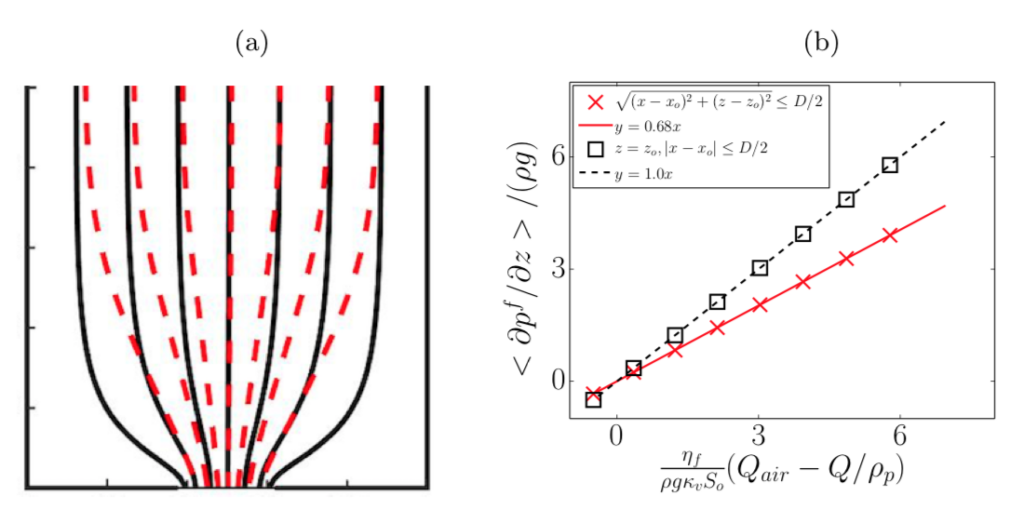
Avalanches of Brownian granular materials [paper in PRL]
Macroscopic granular materials and colloids are usually studied by different communities. But what happens if particles in a granular heap are so small that their thermal agitation becomes comparable to their weight? In this paper, we study such ‘Brownian granular flows’ using a microfluidic setup and show that thermal agitation can completely erase the flow threshold, a first step to bridge the gap between the physics of granular matter and colloids.
Bérut et al Phys. Rev. Lett. – Published 12 December 2019
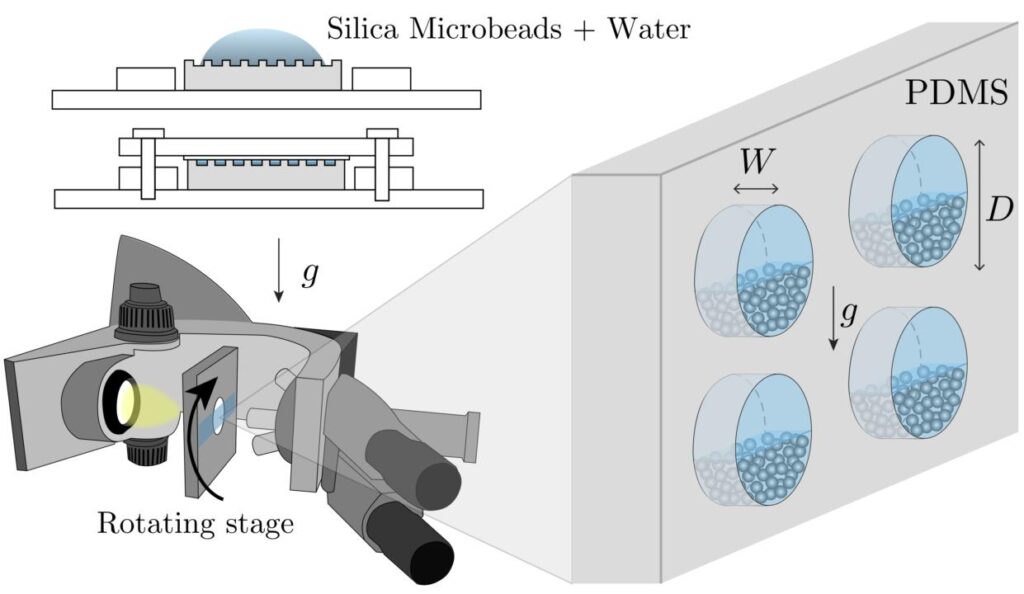
Rheology of immersed and dry frictional spheres [paper in PRFluids]
In this paper, we use pressure-imposed rheometry to study the influence of surface roughness on the rheology of immersed and dry frictional spheres in the dense regime. We show that the quasistatic value of the effective friction coefficient is not significantly affected by particle roughness while the critical volume fraction at jamming decreases with increasing roughness. Collapse of rheological data is obtained by rescaling the volume fraction by the maximum volume fraction.
Tapia et al Phys. Rev. Fluids – Published 17 October 2019
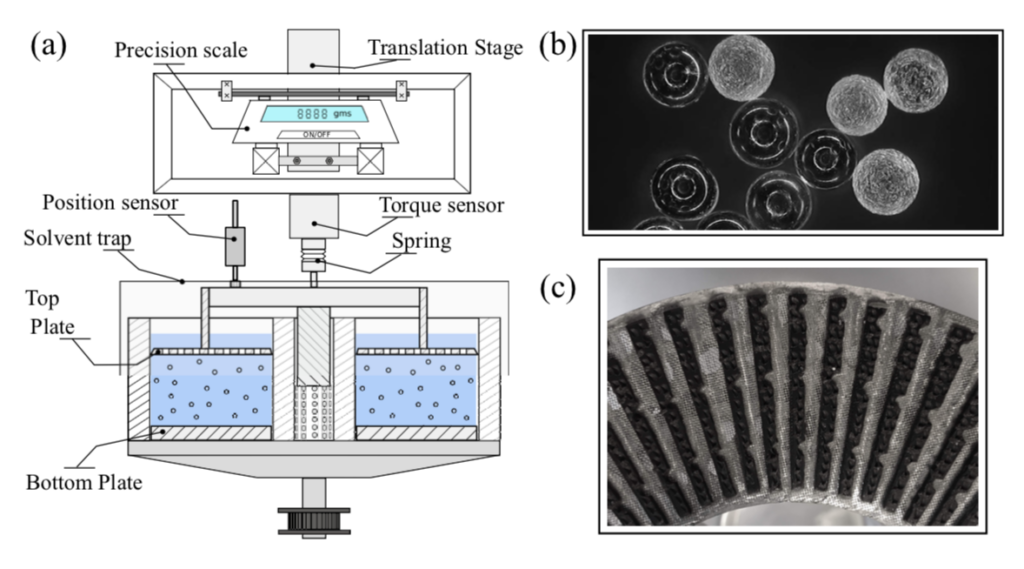
Interparticle friction determines hysteresis in granular flow [paper in PRX]
Hysteresis is a major feature of the solid-liquid transition in granular materials but its origin is still debated. To study this phenomenon, we monitor the avalanche dynamics of non-Brownian suspensions in slowly rotating drums. By using microsilica particles whose interparticle friction coefficient can be turned off, we show that microscopic friction, conversely to inertia, is key to triggering hysteresis in granular suspensions.
Perrin et al Phys. Rev. X – Published 16 August 2019; see Focus story in Physics APS, news in Physics Today
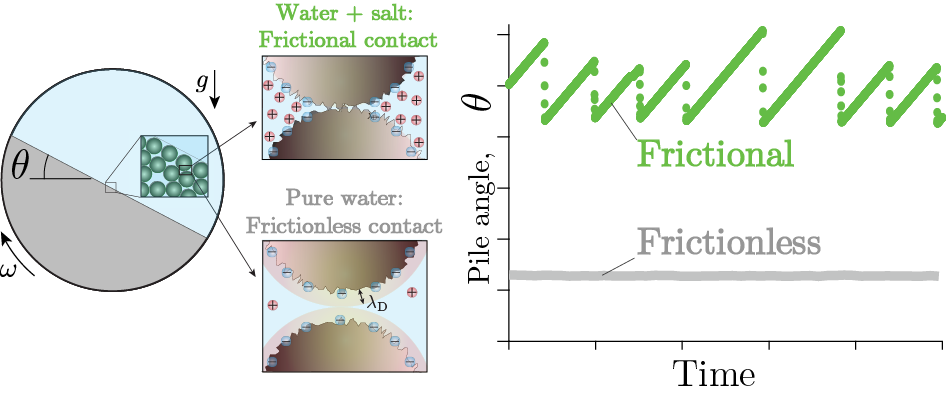
Memory effects and transient gravitropic response in plants [paper in J Exp Bot]
In this paper, we study the plant gravitropic response to transient inclinations at the organ scale and the associated motion of statoliths at the cellular level. Our results reveal the existence of a memory process in the signalling pathway, independent of statolith dynamics. By combining this memory process with statolith motion, we build a mathematical model that unifies the different laws found in the literature and that predicts the early bending response of shoots to arbitrary gravi-stimulations.
Chauvet et al J Exp Bot 70,1955–1967 (2019) – Published 27 March 2019
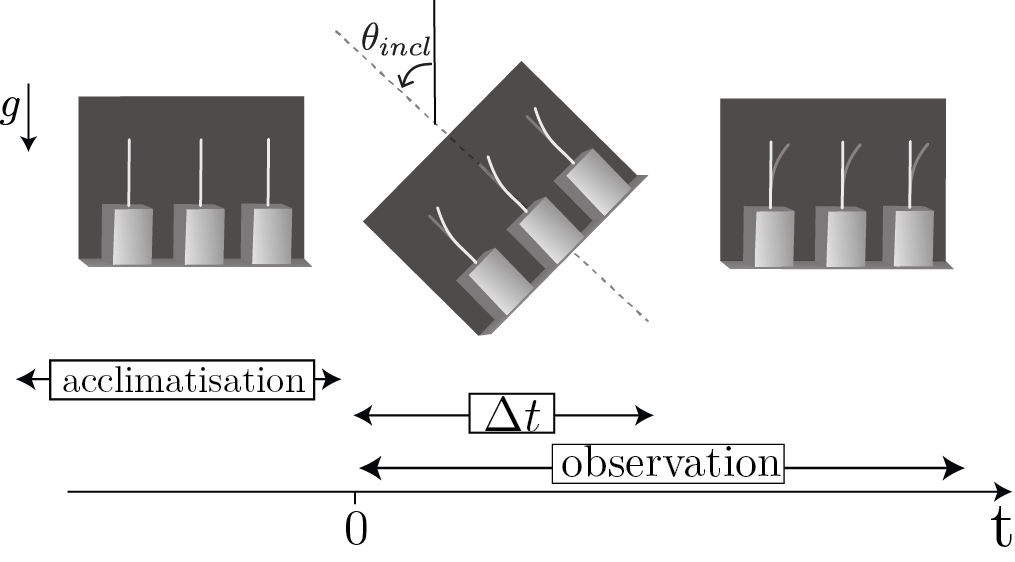
Breakup of a particulate suspension jet [paper in PRFluids]
Adding solid particles to a liquid, which increases the effective viscosity, can paradoxically shorten the breakup length of a liquid capillary jet accelerated by gravity. This apparent contradiction is rationalized by considering finite-size effects occurring at the scale of a few particles. A model is presented which captures the breakup length of suspension jets for a broad range of conditions.
Château et al Phys. Rev. Fluid 4, 012001(R) – Published 10 January 2019
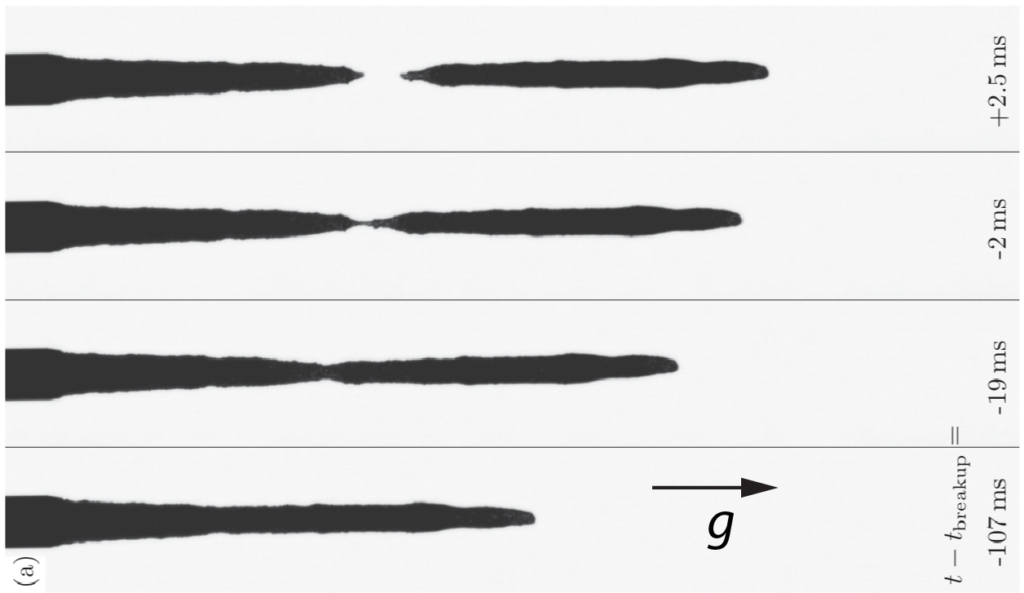
Des offres de stages, thèses et post-doctorats sont régulièrement proposés par les membres de l’axe. N’hésitez pas à nous contacter !

















